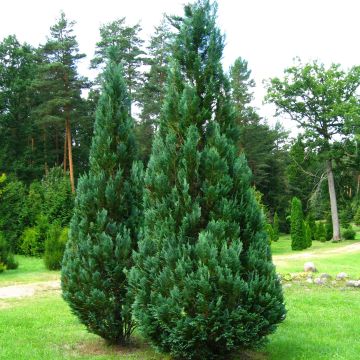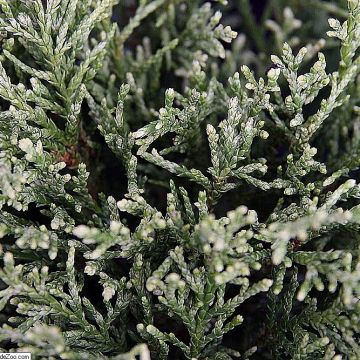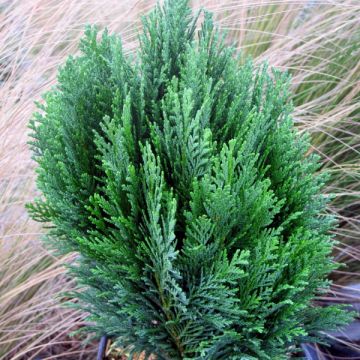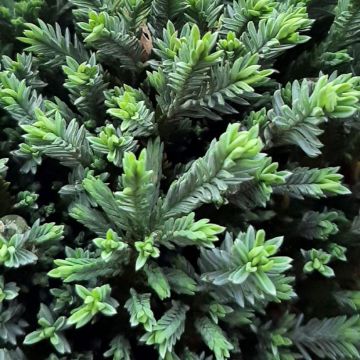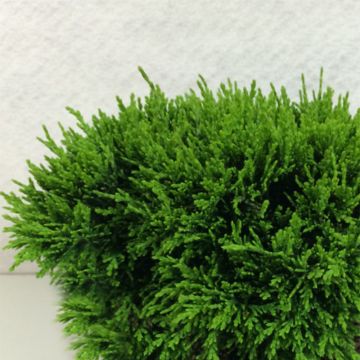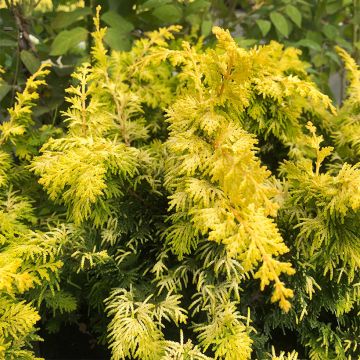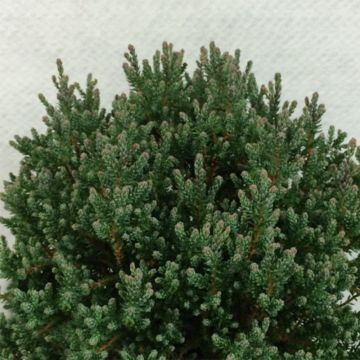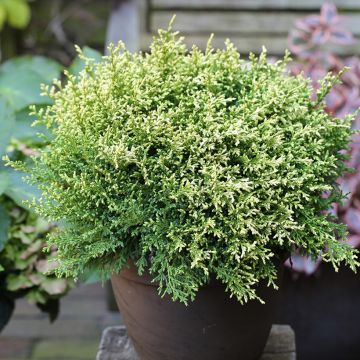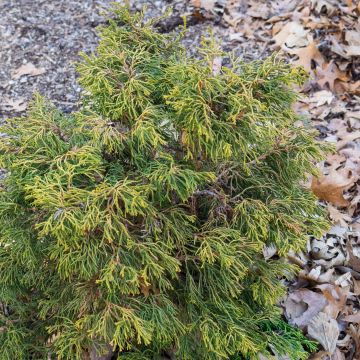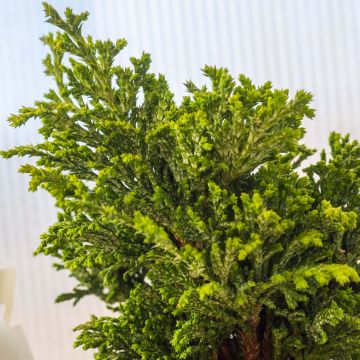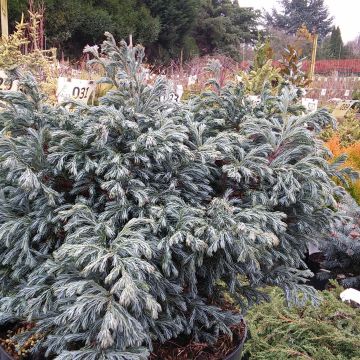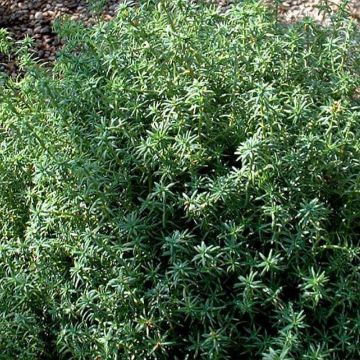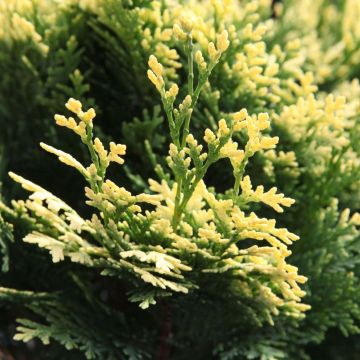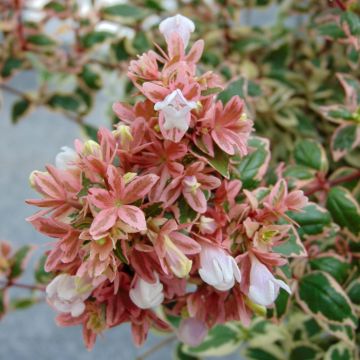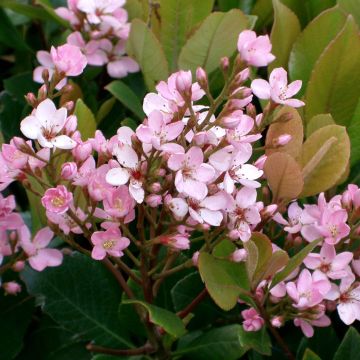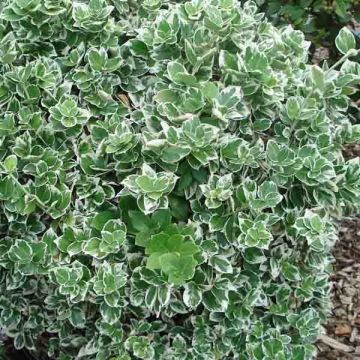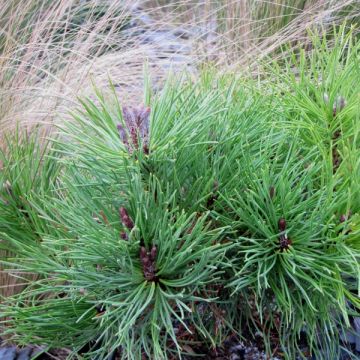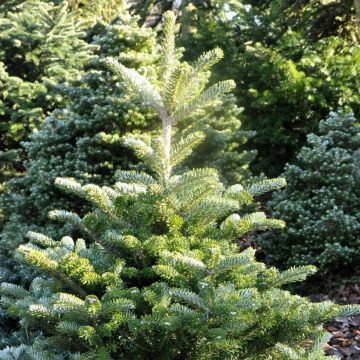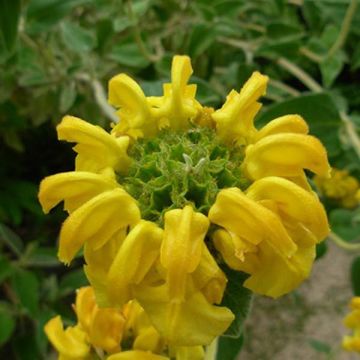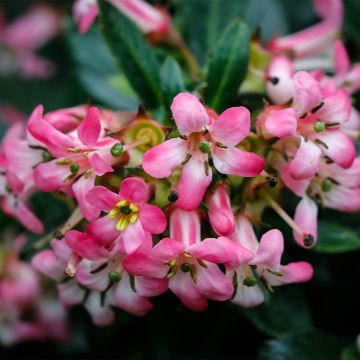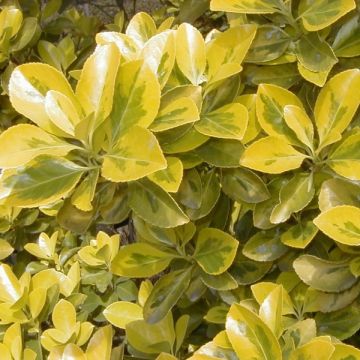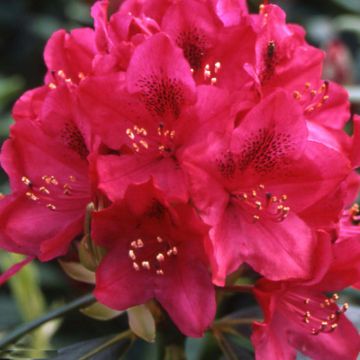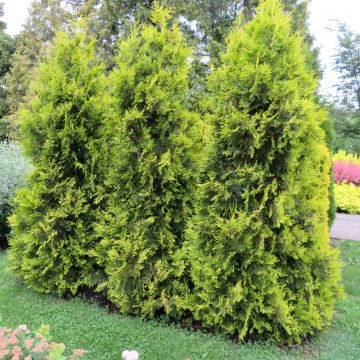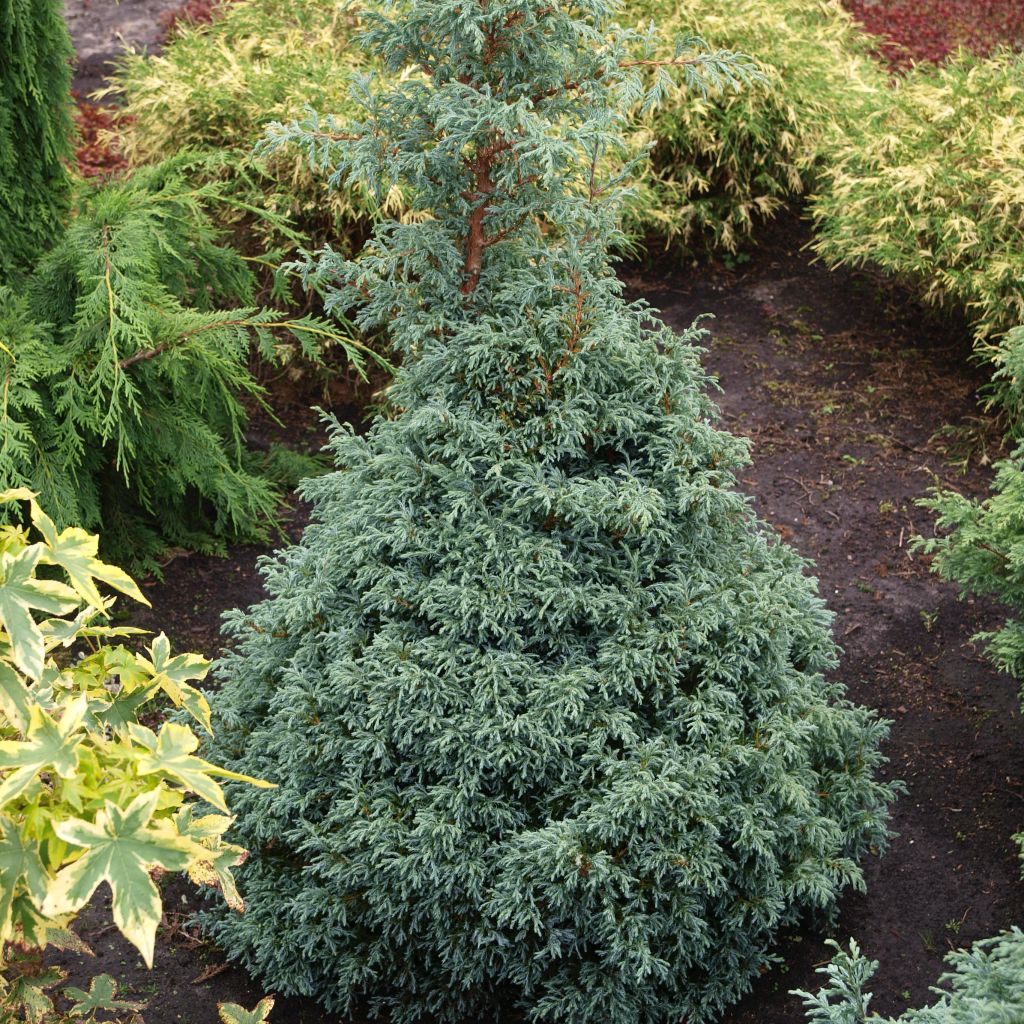

Chamaecyparis pisifera Baby Blue - Sawara Cypress
Chamaecyparis pisifera Baby Blue - Sawara Cypress
Chamaecyparis pisifera Baby Blue
Sawara Cypress, Japanese false cypress
Why not try an alternative variety in stock?
View all →This plant carries a 24 months recovery warranty
More information
We guarantee the quality of our plants for a full growing cycle, and will replace at our expense any plant that fails to recover under normal climatic and planting conditions.
From €5.90 for pickup delivery and €6.90 for home delivery
Express home delivery from €8.90.
Does this plant fit my garden?
Set up your Plantfit profile →
Description
Chamaecyparis pisifera 'Baby Blue', also known as Sawara Cypress or sometimes false blue cypress, is a beautifully elegant medium-sized conifer with a broad and dense pyramidal habit. Its reddish-brown branches are covered with small, fairly soft needles. The needles are grey-silver-blue on the top and white on the underside. Slow-growing, it will not exceed 2m (7ft) at maturity. While perfect in rock gardens and small spaces, this conifer also adapts remarkably well to container gardening. It prefers a sunny or semi-shaded exposure, in fresh but light and well-drained, neutral or acidic soil.
Chamaecyparis pisifera is a robust Japanese species belonging to the Cupressaceae family, which can reach 45m (148ft) in its natural state. It is mainly used for its rot-resistant lemon-yellow wood in the production of lacquered furniture and for the construction of numerous buildings such as palaces in its country of origin. It has given rise to numerous cultivars, classified into four groups.
After many years, the 'Baby Blue' variety forms a small tree with a broad conical to pyramidal habit, with branches arranged in tiers 1.5 to 2m (5 to 7ft) high and 90cm to 1m (35in to 3ft) in width. Its almost horizontal branches are covered with soft foliage, which, depending on the light, displays intense grey, blue, and silver reflections. The juvenile leaves are needle-like (linear, rigid, and pointed), measuring from 4 to 8mm (0.2 to 0.3in) in length, while the scale-like and pointed adult leaves do not exceed 2mm (0.1in) in length. The undersides of these leaves show a marked white band, corresponding to a row of stomata (microscopic openings allowing gas exchange in plants). Cones appear in March-April at the ends of the branches. On male plants, the cones are black; on female plants, the cones are green to brown. They have a rounded shape, measure 4 to 8mm (0.2 to 0.3in) in diameter, and are covered with scales. They mature about 7 to 8 months after pollination on female subjects.
Chamaecyparis pisifera 'Baby Blue' is appreciated for its elegance and refinement. It is ideal for container gardening on a terrace or in small gardens due to its slow growth and small size. With its natural silhouette, which requires no pruning, it works wonders in rock gardens, in the company of shorter varieties, in a cushion-like arrangement. The silver of its foliage blends well with purple foliage and bright pink or magenta flowers. The architectural qualities of dwarf conifers naturally impose themselves in the design of a contemporary garden, which prefers the aesthetics of shapes, silhouettes, and textures over the fleeting beauty of flowers. With their reassuring permanence, these plants durably structure a bed. They can mark pathways, and border terraces, easily replacing the strong presence of trimmed boxwood. They serve as a backdrop for small roses, peonies, or tousled grasses with a complementary temperament. They can also be planted in a mixed hedge or with ground cover plants such as aubrieta and cerastium, as well as flowering shrubs. The key is to play with volumes and colours.
Report an error about the product description
Chamaecyparis pisifera Baby Blue - Sawara Cypress in pictures
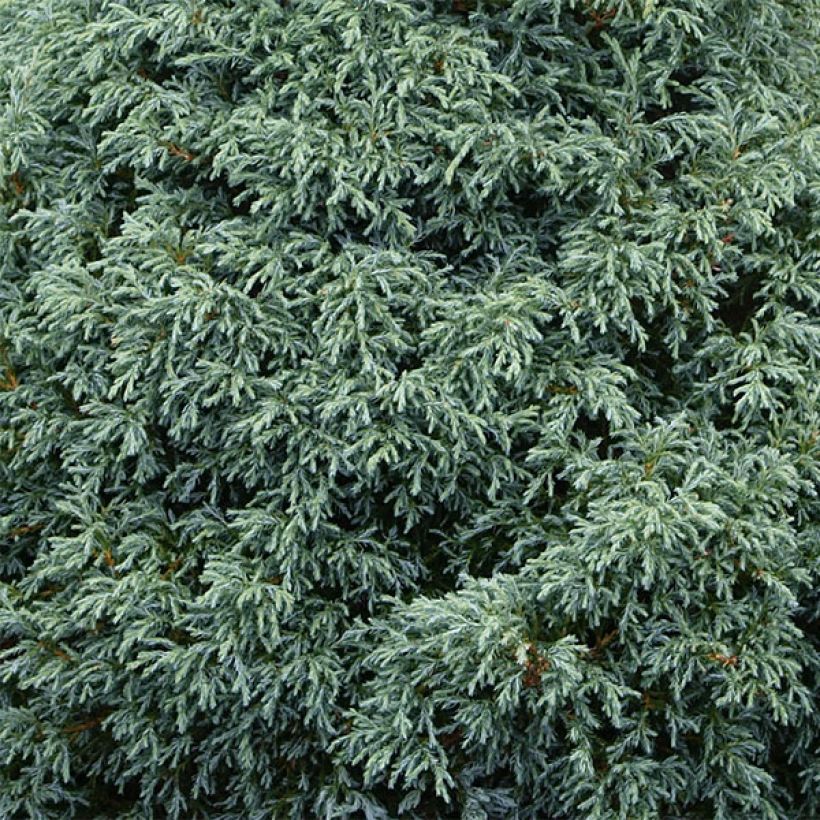

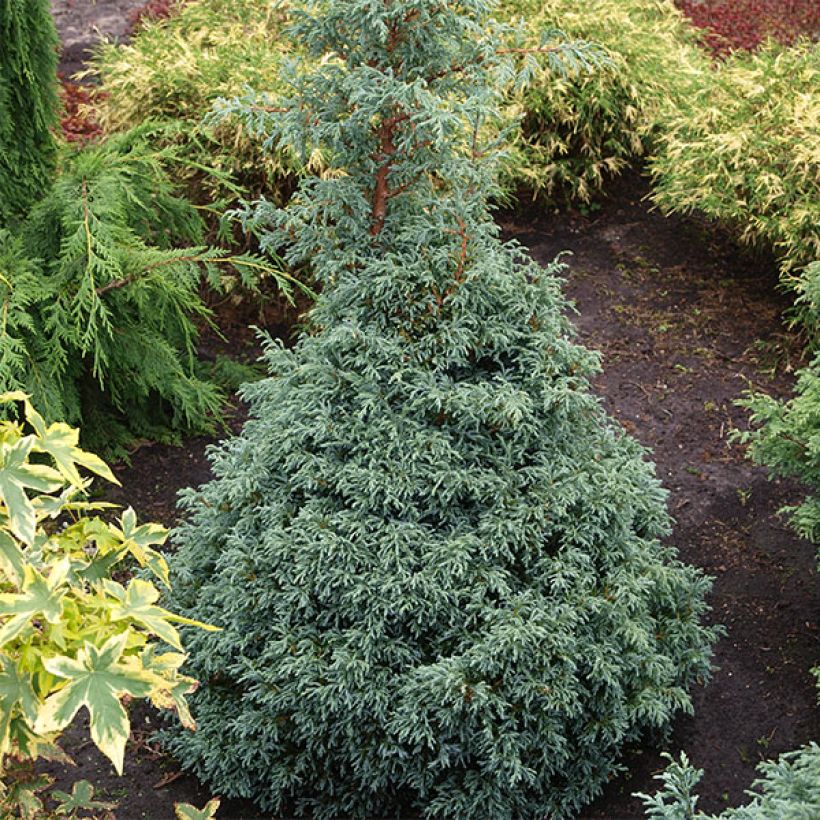

Plant habit
Flowering
Foliage
Botanical data
Chamaecyparis
pisifera
Baby Blue
Cupressaceae
Sawara Cypress, Japanese false cypress
Cultivar or hybrid
Other Chamaecyparis
Planting and care
Plant from September to November and from February to June in fertile, light, neutral or slightly acidic, moist but well-drained soil. Choose a sunny or semi-shaded location sheltered from prevailing winds. Soak the root balls well before planting. Add organic matter at planting and water abundantly in the first years. Apply a special conifer fertiliser every year in April and weed the soil in summer. Once well established, this variety is fairly resistant to drought. It does not require pruning. While the tender shoots of young plants can be regularly trimmed to form a hedge, care must be taken never to trim into old wood on mature subject, as new shoots will not grow.
Planting period
Intended location
Care
-
, onOrder confirmed
Reply from on Promesse de fleurs
Evergreen shrubs
Haven't found what you were looking for?
Hardiness is the lowest winter temperature a plant can endure without suffering serious damage or even dying. However, hardiness is affected by location (a sheltered area, such as a patio), protection (winter cover) and soil type (hardiness is improved by well-drained soil).

Photo Sharing Terms & Conditions
In order to encourage gardeners to interact and share their experiences, Promesse de fleurs offers various media enabling content to be uploaded onto its Site - in particular via the ‘Photo sharing’ module.
The User agrees to refrain from:
- Posting any content that is illegal, prejudicial, insulting, racist, inciteful to hatred, revisionist, contrary to public decency, that infringes on privacy or on the privacy rights of third parties, in particular the publicity rights of persons and goods, intellectual property rights, or the right to privacy.
- Submitting content on behalf of a third party;
- Impersonate the identity of a third party and/or publish any personal information about a third party;
In general, the User undertakes to refrain from any unethical behaviour.
All Content (in particular text, comments, files, images, photos, videos, creative works, etc.), which may be subject to property or intellectual property rights, image or other private rights, shall remain the property of the User, subject to the limited rights granted by the terms of the licence granted by Promesse de fleurs as stated below. Users are at liberty to publish or not to publish such Content on the Site, notably via the ‘Photo Sharing’ facility, and accept that this Content shall be made public and freely accessible, notably on the Internet.
Users further acknowledge, undertake to have ,and guarantee that they hold all necessary rights and permissions to publish such material on the Site, in particular with regard to the legislation in force pertaining to any privacy, property, intellectual property, image, or contractual rights, or rights of any other nature. By publishing such Content on the Site, Users acknowledge accepting full liability as publishers of the Content within the meaning of the law, and grant Promesse de fleurs, free of charge, an inclusive, worldwide licence for the said Content for the entire duration of its publication, including all reproduction, representation, up/downloading, displaying, performing, transmission, and storage rights.
Users also grant permission for their name to be linked to the Content and accept that this link may not always be made available.
By engaging in posting material, Users consent to their Content becoming automatically accessible on the Internet, in particular on other sites and/or blogs and/or web pages of the Promesse de fleurs site, including in particular social pages and the Promesse de fleurs catalogue.
Users may secure the removal of entrusted content free of charge by issuing a simple request via our contact form.
The flowering period indicated on our website applies to countries and regions located in USDA zone 8 (France, the United Kingdom, Ireland, the Netherlands, etc.)
It will vary according to where you live:
- In zones 9 to 10 (Italy, Spain, Greece, etc.), flowering will occur about 2 to 4 weeks earlier.
- In zones 6 to 7 (Germany, Poland, Slovenia, and lower mountainous regions), flowering will be delayed by 2 to 3 weeks.
- In zone 5 (Central Europe, Scandinavia), blooming will be delayed by 3 to 5 weeks.
In temperate climates, pruning of spring-flowering shrubs (forsythia, spireas, etc.) should be done just after flowering.
Pruning of summer-flowering shrubs (Indian Lilac, Perovskia, etc.) can be done in winter or spring.
In cold regions as well as with frost-sensitive plants, avoid pruning too early when severe frosts may still occur.
The planting period indicated on our website applies to countries and regions located in USDA zone 8 (France, United Kingdom, Ireland, Netherlands).
It will vary according to where you live:
- In Mediterranean zones (Marseille, Madrid, Milan, etc.), autumn and winter are the best planting periods.
- In continental zones (Strasbourg, Munich, Vienna, etc.), delay planting by 2 to 3 weeks in spring and bring it forward by 2 to 4 weeks in autumn.
- In mountainous regions (the Alps, Pyrenees, Carpathians, etc.), it is best to plant in late spring (May-June) or late summer (August-September).
The harvesting period indicated on our website applies to countries and regions in USDA zone 8 (France, England, Ireland, the Netherlands).
In colder areas (Scandinavia, Poland, Austria...) fruit and vegetable harvests are likely to be delayed by 3-4 weeks.
In warmer areas (Italy, Spain, Greece, etc.), harvesting will probably take place earlier, depending on weather conditions.
The sowing periods indicated on our website apply to countries and regions within USDA Zone 8 (France, UK, Ireland, Netherlands).
In colder areas (Scandinavia, Poland, Austria...), delay any outdoor sowing by 3-4 weeks, or sow under glass.
In warmer climes (Italy, Spain, Greece, etc.), bring outdoor sowing forward by a few weeks.

































